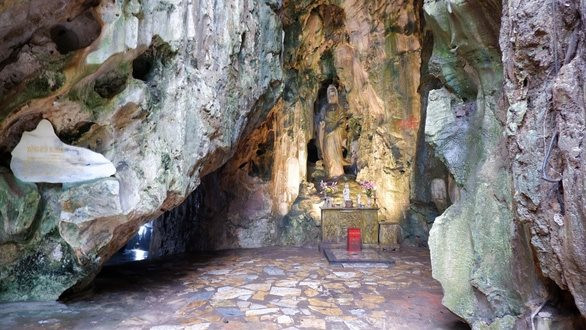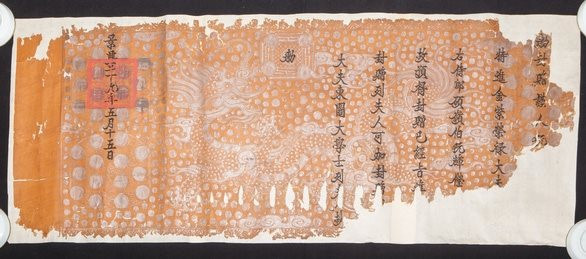(TITC) - These are Ma Nhai (Inscriptions) on the Marble Mountains, Da Nang City, and Sino-Nom Documents in Truong Luu Village, Ha Tinh Province (1689-1943).
At the 9th Meeting in Andong City, Korea on 26th November 2022, UNESCO Memory of the World Committee for Asia and the Pacific (MOWCAP) approved 2 above applications of Vietnam.
The Ma Nhai - on Marble Mountains (Ngu Hanh Son) scenic spot, Da Nang, is a treasure trove of precious documentary heritage in Chinese and Nom (Sino-Nom) characters, in large quantities, including 78 documents (of which 76 stele-documents in Chinese and 2 stele-documents in Nom script) were carved on cliffs and caves.

Ma Nhai (Inscriptions) on Marble Mountains, Da Nang City (Photo: Department of Cultural Heritage)
These documents were written by high virtues, kings, mandarins of the Nguyen Dynasty, as well as venerable monks and intellectuals, dating from the first half of the 17th century to the 20th century. The documents clearly show “memories” of the economic, cultural, political and social contacts between Vietnam and other countries on the maritime route across the region as well as the role of Vietnamese women in international marriages in the 17th century.
Ma Nhai (Inscriptions) on Marble Mountains contains many outstanding values. Some of which are the only original document written by King Minh Mang and engraved on the cliffs and caves; some are considered a history of Buddhism in Dang Trong (Southern), etc.

Sino-Nom Documents in Truong Luu Village, Ha Tinh Province (Photo: Department of Cultural Heritage)
Sino-Nom Documents in Truong Luu Village, Ha Tinh Province (1689-1943) is the unique handwritten collection in Chinese and Nom with 48 documents of 3 families (Nguyen Huy, Tran Van, and Hoang) in Truong Luu Village, Can Loc District. The collection includes 26 documents of the ordinations of the Le and Nguyen dynasties (1689-1943) in honor – bestowed upon gods, bestowed upon them – in titles and ordinations; 19 administrative documents sent by local authorities to people in Truong Luu, Can Loc, Ha Tinh under the Nguyen Dynasty (1803-1943) and 3 silk posters with dimensions of 97x197cm, 121x177cm and 70x127cm for individuals.
This collection presents a remarkable snapshot of a small village developing into a cultural center in Vietnam and its contribution to society.
This documentary heritage provides a valuable source to study the deeply-rooted common tradition of emphasising self-cultivation and family education in Asian countries.
Tourism Information Technology Center